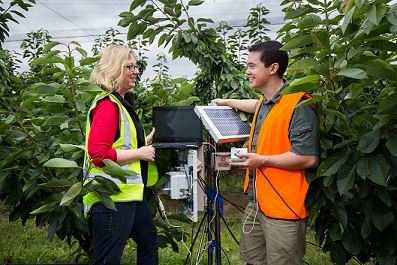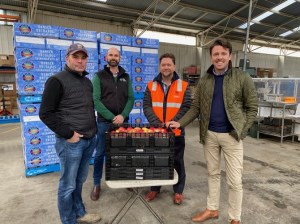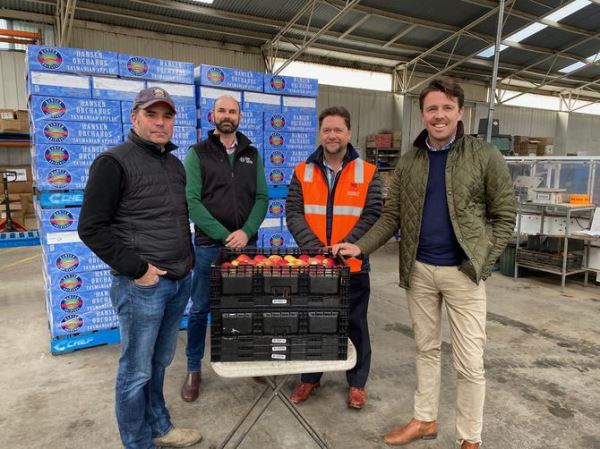University of Tasmania researchers are developing a cutting-edge supply-chain traceability system to enhance Tasmania’s booming horticultural exports to China.
They have won $455,000 in federal government grants for the new cloud-based system.
Associate Professor Jiangang (Johnny) Fei from the Australian Maritime College says the project underscores the University’s mission to make a difference for Tasmania, and from Tasmania to the world.
Associate Professor Fei, a specialist in logistics and maritime management, was the lead applicant for the team which successfully applied for funding under the Department of Agriculture, Water and the Environment’s Traceability Grants Program. The University’s application was one of just 16 to be funded from a total of 168 applications.
“The Department has outlined that improvements in the traceability of Australian horticultural products are critical due to the significant growth of production and exports in this sector and the increasing pressure from importing countries for traceability,” he said.
More than 70 per cent of Australian horticultural products are exported, with China a key market.
Tasmania’s agri-food producers are among those enjoying recent exceptional years: according to DPIPWE’s Tasmanian AgriGrowth Score Card, international food exports from Tasmania totalled $7.4 million in 2017-18, up 22.5 per cent in value.
Clean, green brand
“Food quality, safety, freshness and taste are paramount in the minds of China’s burgeoning middle class, and Tasmania’s clean, green brand has our horticultural sector well positioned to help meet that growing demand,” research team member Professor Dugald Close from the Tasmanian Institute of Agriculture explains.
“We will develop a system that will allow two-way tracing of horticultural products along the supply chain, providing for streamlined extraction of information for compliance, food safety, and proof of provenance and authenticity.”
The growing export market for Tasmanian cherries (valued at $39m in 2017-18) is just one area that will benefit from this new system.
Sense-T’s Associate Professor Stephen Cahoon says routinely recorded data, including the pre-harvest seasonal conditions, production details such as agri-chemical use, and fruit variety, quantity, quality, location and time of packing, will be uploaded to the cloud-based data management centre.
“Access will be provided to supply-chain participants to upload and retrieve this information to generate reports as needed and appropriate,” he says. “These participants would include growers, local and international transport providers, freight forwarders, and government agencies responsible for quarantine and customs clearance.”
Relevant to other Australian fresh produce supply chains
Associate Professor Fei says extensive input from advanced horticultural supply chain partners will ensure a digital architectural design that is fit for purpose.
The system will be modular with scalability and applicability in mind to ensure relevance to other Australian fresh produce supply chains with minimal modification.
A small electronic device attached to each package will provide a unique identity. For each pallet, a sensor is attached with which all individual electronic devices can communicate via sensor nodes and gateways.
The sensor will measure temperature, humidity and other required information along the entire supply chain. It will also record event data such as arrival at a depot or change of transport mode.
Three main functions
The sensor will communicate with the cloud-based data management centre and upload supply chain information in pre-determined intervals. This data will be made available to all supply chain participants and other stakeholders.
“The end-user application has three main functions,” Associate Professor Fei said.
“Firstly, it allows retailers and consumers to check the authenticity of the package. This is achieved through the unique identity device attached to each package. The application allows a mobile device such as a smart phone to retrieve identity information of the package.
“Secondly, consumers can check the provenance of the product they are purchasing through the unique ID given to the package. Thirdly, the application can serve as a digital marketing tool to promote the provenance story of the product and other products that may be of interest."
The UTAS research team also includes Associate Professor Laurie Bonney from Sense-T and Dr Saideepa Kumar from the Tasmanian Institute of Agriculture.


